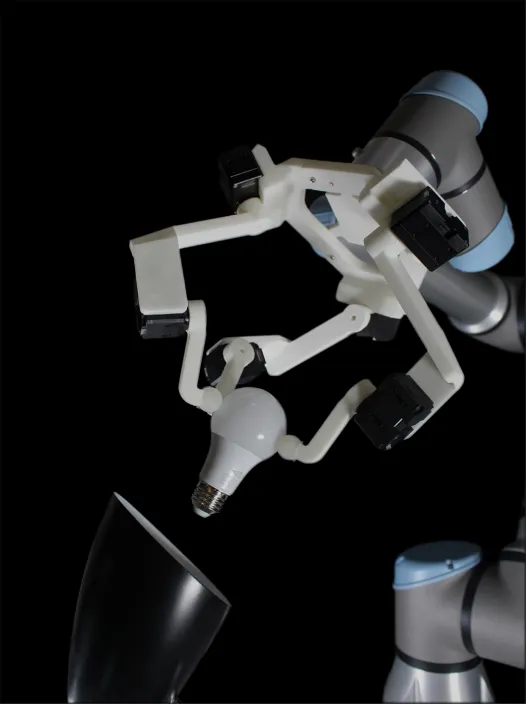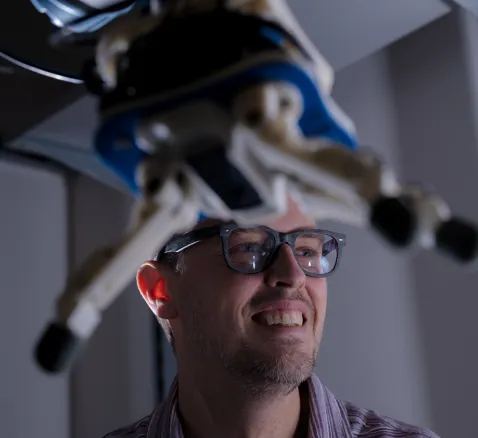Simplified wrist mechanism gives robots a hand
Give robots a specific job - say, placing a can on a conveyor belt in a factory - and they can be extremely efficient. But in less structured environments with varied tasks, even seemingly simple things like unscrewing a light bulb or turning a door handle, things get a lot trickier.
A big part of the problem has to do with the “wrist” mechanisms robots have to work with; they’re often complicated and bulky and struggle with certain maneuvers. A much simpler approach taken by Yale researchers could give robots a way to handle more complicated movements. The results are published in Nature Machine Intelligence.

Typically, robots designed to manipulate objects are built with a gripper and a wrist with three degrees of freedom. That is, they can move in three independent ways: “Roll” (rotating front to back), “pitch” (side to side) and “yaw” (vertically). But wrists are mechanically complex, and are often located far from the grasped object, requiring the robot to move its entire arm to complete the task. The result is awkward and inefficient movements that require a lot of space.
This Yale-designed robotic hand, which the researchers have named the Sphinx, was developed in the lab of Prof. Aaron Dollar. It features a spherical mechanism that can both grasp and rotate a wide range of objects in all three axes, combining much of the function of traditional wrists and grippers.
“It's not very complex,” said Vatsal Patel, lead author of the paper and a Ph.D. candidate in Dollar’s lab. “It doesn't have any sensors or anything on it. It works without any cameras or sensors and things like that. But because of the spherical mechanism, it's always going to roll, pitch, and yaw objects.”
“It's a lot more efficient, and you don't need a ton of space. The wrist is able to do these rotations much closer to the object without the burden of moving the whole arm. It works much faster and much more efficiently.”
The design also makes it easier for robots to perform tasks within a constrained space, such as screwing in a lightbulb inside a closet. More broadly, it brings the field a step closer to an increasingly common goal of designing robots that work well in homes, disaster sites, and other unstructured environments.
“In these environments, robots don't know exactly where the objects are,” Patel said. “They're trying to adapt to the environment, adapt to the objects. That's where robotics in general is moving, and we're trying to solve the same problems.”
The design files and build instructions for the Sphinx hand are available open-source through the Yale OpenHand project
More Details
Published Date
Aug 7, 2025


